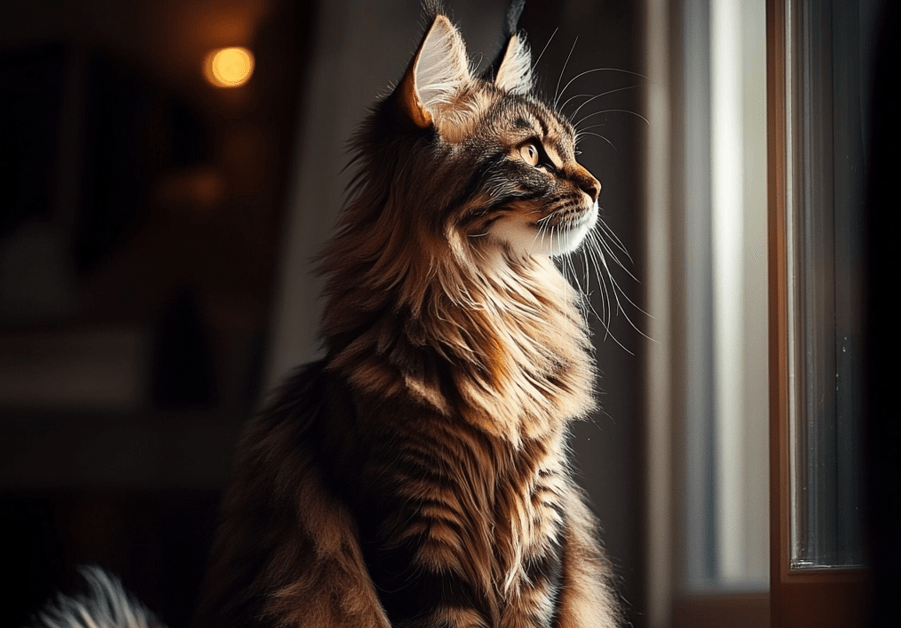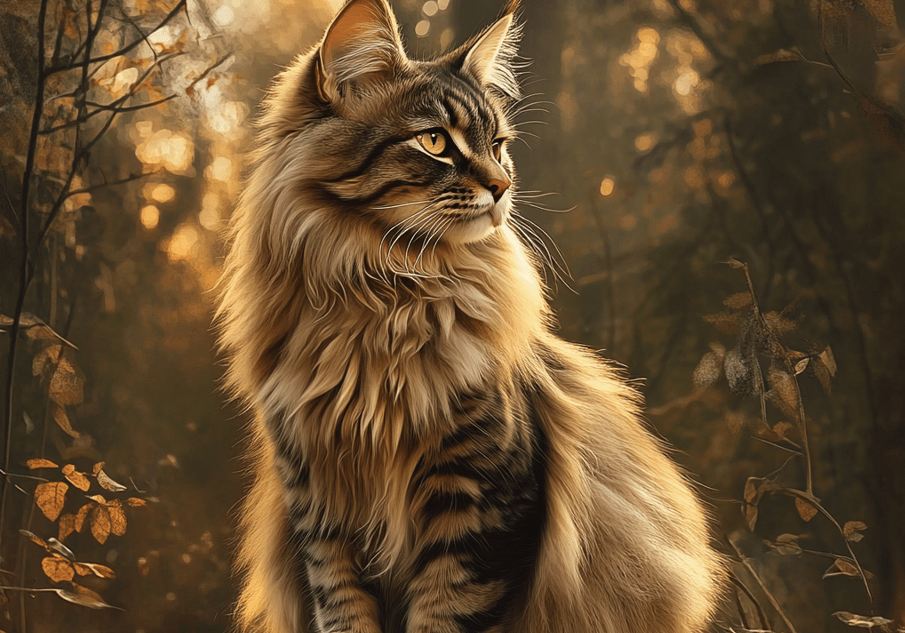
Maine Coons, with their luxurious, long coats and playful personalities, are prone to hairballs due to their grooming habits. To prevent hairballs in Maine Coons naturally, you need a combination of proper grooming, diet, hydration, and lifestyle adjustments. This comprehensive guide explores natural, effective strategies to reduce hairballs, ensuring your Maine Coon stays healthy and comfortable. By addressing the root causes and incorporating holistic solutions, you can minimize hairball issues without relying on chemical-based products.
Understanding Hairballs in Maine Coons
Hairballs, or trichobezoars, form when cats ingest loose fur during grooming, which accumulates in the stomach. Maine Coons are particularly susceptible because of their thick, water-repellent coats and frequent self-grooming. While occasional hairballs are normal, frequent vomiting or hacking can indicate a problem, potentially leading to intestinal blockages if untreated. Preventing hairballs naturally focuses on reducing fur ingestion, supporting digestion, and promoting overall wellness.
Why Maine Coons Are Prone to Hairballs
Long, dense fur: Maine Coons have a double-layered coat that sheds year-round, increasing fur intake during grooming.
Large size: Their bigger bodies mean more surface area to groom, leading to higher fur ingestion.
Active grooming habits: Maine Coons are meticulous, spending significant time licking their coats.
Seasonal shedding: Heavy shedding during spring and fall exacerbates hairball formation.
Natural Strategies to Prevent Hairballs in Maine Coons
Below are proven, natural methods to prevent hairballs in Maine Coons, designed to be safe, effective, and easy to implement.
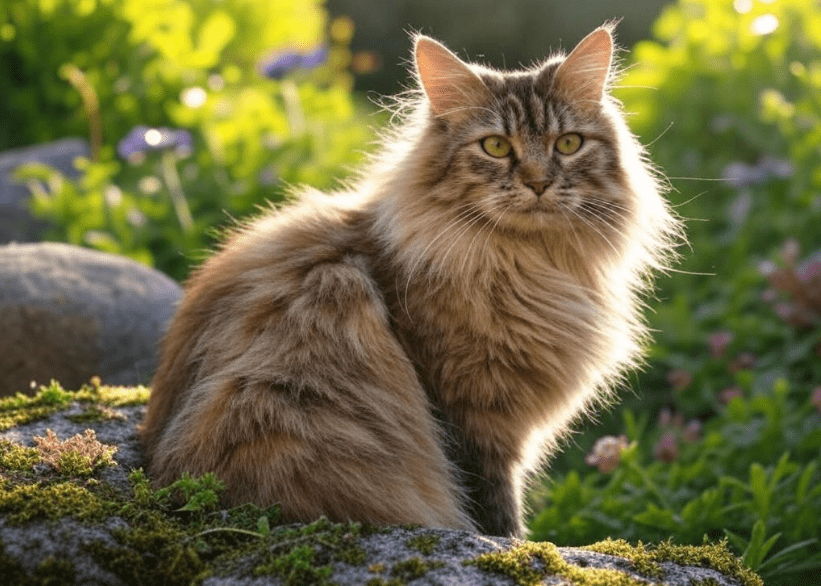
1. Regular Grooming to Reduce Loose Fur
Grooming is the cornerstone of hairball prevention. By removing loose fur before your Maine Coon ingests it, you significantly reduce the risk of hairballs.
How to Groom Effectively:
Brush daily: Use a high-quality, stainless-steel comb or a deshedding tool designed for long-haired cats. Focus on areas like the belly, chest, and tail where fur tends to mat.
Use a slicker brush for finishing: After combing, a slicker brush can remove remaining loose fur and smooth the coat.
Bathe occasionally: A gentle, cat-safe shampoo can reduce excess fur and dander. Limit baths to once every 4-6 weeks to avoid drying out their skin.
Trim mats carefully: If mats form, use blunt-tipped scissors or consult a professional groomer to prevent skin irritation.
Pro Tip: Make grooming a positive experience by offering treats or praise. Maine Coons are social and respond well to bonding during grooming sessions.
2. Optimize Diet for Hairball Prevention
A balanced, high-quality diet supports digestion and helps move ingested fur through the digestive tract, reducing hairball formation.
Dietary Tips:
Choose high-fiber foods: Fiber helps bind fur in the stomach and promotes regular bowel movements. Look for wet or dry foods with natural fiber sources like pumpkin, beet pulp, or psyllium husk.
Incorporate omega-3 fatty acids: Fish oil or flaxseed oil supplements improve coat health, reducing shedding and matting. Consult your vet for proper dosing.
Feed wet food: Wet food increases moisture intake, aiding digestion and preventing fur from clumping in the stomach.
Avoid fillers: Low-quality foods with corn, wheat, or soy can cause digestive issues, increasing hairball risk. Opt for grain-free or limited-ingredient diets.
Natural Additives:
Pumpkin puree: Add 1-2 teaspoons of plain, canned pumpkin (not pie filling) to your cat’s food daily. Its fiber content helps move fur through the intestines.
Slippery elm bark: This natural remedy soothes the digestive tract and supports healthy stool. Use under veterinary guidance.
3. Encourage Hydration
Proper hydration ensures fur passes smoothly through the digestive system, preventing blockages. Maine Coons often prefer running water, making hydration a key focus.
Hydration Strategies:
Use a cat fountain: Maine Coons are drawn to moving water. A pet water fountain encourages drinking and keeps water fresh.
Offer multiple water stations: Place bowls in quiet, accessible areas around the house. Use wide, shallow bowls to avoid whisker fatigue.
Add water to food: Mix a small amount of water into wet food to boost moisture intake.
Provide broth: Low-sodium chicken or fish broth (free of onions or garlic) can entice your Maine Coon to drink more.
4. Promote Digestive Health with Probiotics
A healthy gut supports efficient digestion, reducing the likelihood of hairballs. Probiotics introduce beneficial bacteria that aid in breaking down fur and improving stool consistency.
How to Use Probiotics:
Choose cat-specific probiotics: Look for products with strains like Lactobacillus or Bifidobacterium. Fortiflora or Proviable are popular vet-recommended options.
Add to food: Sprinkle probiotic powder over meals or use probiotic treats for easy administration.
Consult your vet: Ensure the probiotic is safe for long-term use, especially if your Maine Coon has health conditions.
5. Provide Hairball-Friendly Plants
Certain plants can act as natural laxatives, helping Maine Coons pass hairballs more easily. These are safe, natural alternatives to petroleum-based hairball remedies.
Safe Plants:
Cat grass (wheatgrass or oat grass): Grown indoors, cat grass encourages chewing, which aids digestion and promotes vomiting of hairballs before they become problematic.
Catnip: While primarily a stimulant, catnip can encourage play and digestion, indirectly supporting hairball passage.
Caution: Ensure plants are non-toxic and free from pesticides. Avoid over-reliance, as excessive plant consumption can cause vomiting or diarrhea.
6. Increase Physical Activity
Exercise stimulates digestion and promotes regular bowel movements, helping move fur through the digestive tract. Maine Coons are active and playful, so engaging them physically is both fun and beneficial.
Activity Ideas:
Interactive toys: Feather wands, laser pointers, or puzzle toys keep your Maine Coon moving and mentally stimulated.
Climbing structures: Cat trees or shelves cater to their love of climbing and jumping, encouraging natural activity.
Play sessions: Dedicate 15-20 minutes twice daily to active play, mimicking hunting behaviors.
7. Manage Stress to Reduce Over-Grooming
Stress can lead to excessive grooming, increasing fur ingestion and hairball formation. Maine Coons are sensitive to environmental changes, making stress management essential.
Stress-Reduction Tips:
Maintain a stable routine: Consistent feeding, play, and grooming times create a sense of security.
Provide enrichment: Scratching posts, puzzle feeders, and window perches keep your Maine Coon engaged and less likely to over-groom.
Use pheromone diffusers: Products like Feliway mimic calming feline pheromones, reducing anxiety.
Monitor multi-cat dynamics: In multi-pet homes, ensure each cat has their own space to prevent territorial stress.
8. Regular Veterinary Checkups
While natural methods are effective, underlying health issues can contribute to hairball problems. Regular vet visits ensure your Maine Coon is healthy and free from conditions that exacerbate hairballs.
What to Check:
Gastrointestinal health: Conditions like inflammatory bowel disease or parasites can impair digestion, increasing hairball risk.
Skin and coat health: Allergies or fleas can cause excessive grooming, leading to more fur ingestion.
Dental health: Painful teeth or gums may alter grooming habits, contributing to hairball issues.
Tip: Schedule biannual vet visits for adult Maine Coons and annual checkups for seniors to catch issues early.
Common Mistakes to Avoid
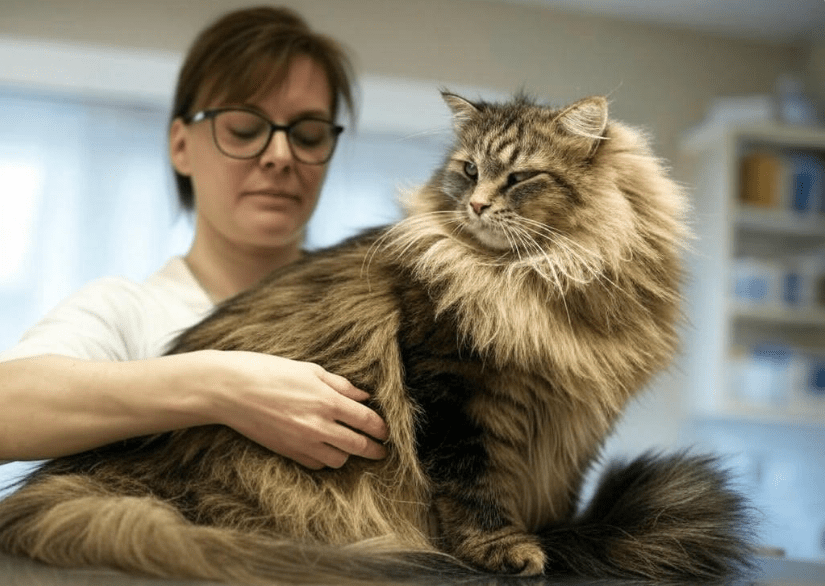
When preventing hairballs naturally, steer clear of these pitfalls:
Overusing hairball remedies: Petroleum-based gels can disrupt digestion if used excessively. Stick to natural alternatives like pumpkin or probiotics.
Neglecting grooming: Inconsistent brushing leads to matting and increased fur ingestion.
Ignoring hydration: Dehydration can cause fur to clump in the stomach, worsening hairballs.
Using toxic plants: Ensure all plants offered are cat-safe to avoid poisoning.
Skipping vet visits: Assuming hairballs are always normal can overlook serious health issues.
When to Seek Veterinary Help
While most hairballs are harmless, persistent or severe symptoms require professional attention. Contact your vet if your Maine Coon exhibits:
1.Frequent vomiting (more than once a month).
2.Lethargy, loss of appetite, or weight loss.
3.Straining or inability to pass stool.
4.Visible discomfort or abdominal swelling.
These could indicate a blockage or underlying condition requiring immediate care.
Creating a Hairball-Free Environment for Your Maine Coon
A holistic approach to hairball prevention involves combining grooming, diet, hydration, and lifestyle adjustments. Here’s a quick checklist for success:
1.Brush daily with appropriate tools to reduce loose fur.
2.Feed a high-fiber, moisture-rich diet with omega-3 supplements.
3.Provide fresh, running water via fountains or multiple bowls.
4.Offer cat grass or probiotics to aid digestion.
5.Engage your Maine Coon in daily play to stimulate digestion.
6.Monitor for stress and maintain a calm environment.
7.Schedule regular vet checkups to address health concerns.
Conclusion
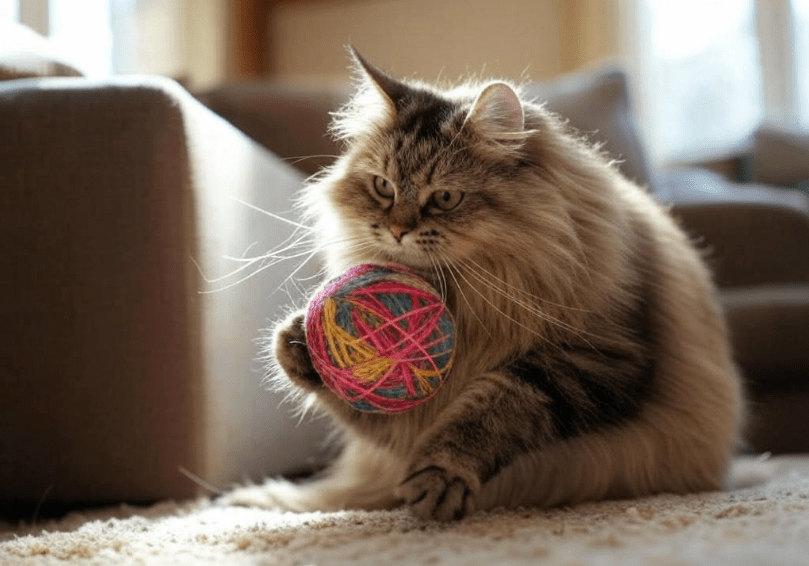
Preventing hairballs in Maine Coons naturally is achievable with a proactive, holistic approach. By prioritizing regular grooming, a high-quality diet, proper hydration, and an active, stress-free lifestyle, you can keep your Maine Coon comfortable and hairball-free. These natural strategies not only reduce hairballs but also enhance your cat’s overall health and well-being. Implement the tips in this guide to create a happy, healthy environment for your majestic Maine Coon, ensuring they thrive without the discomfort of hairballs.

